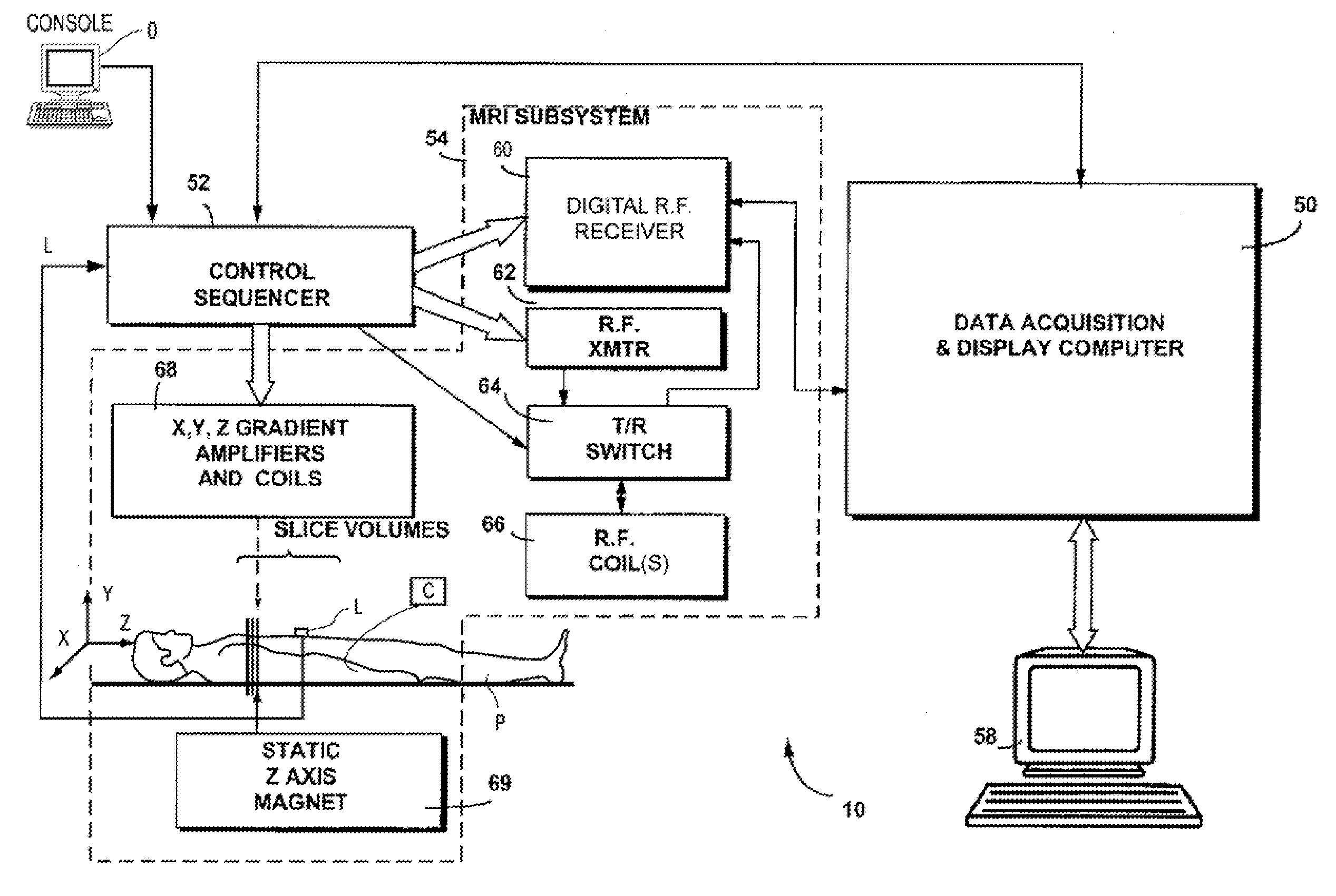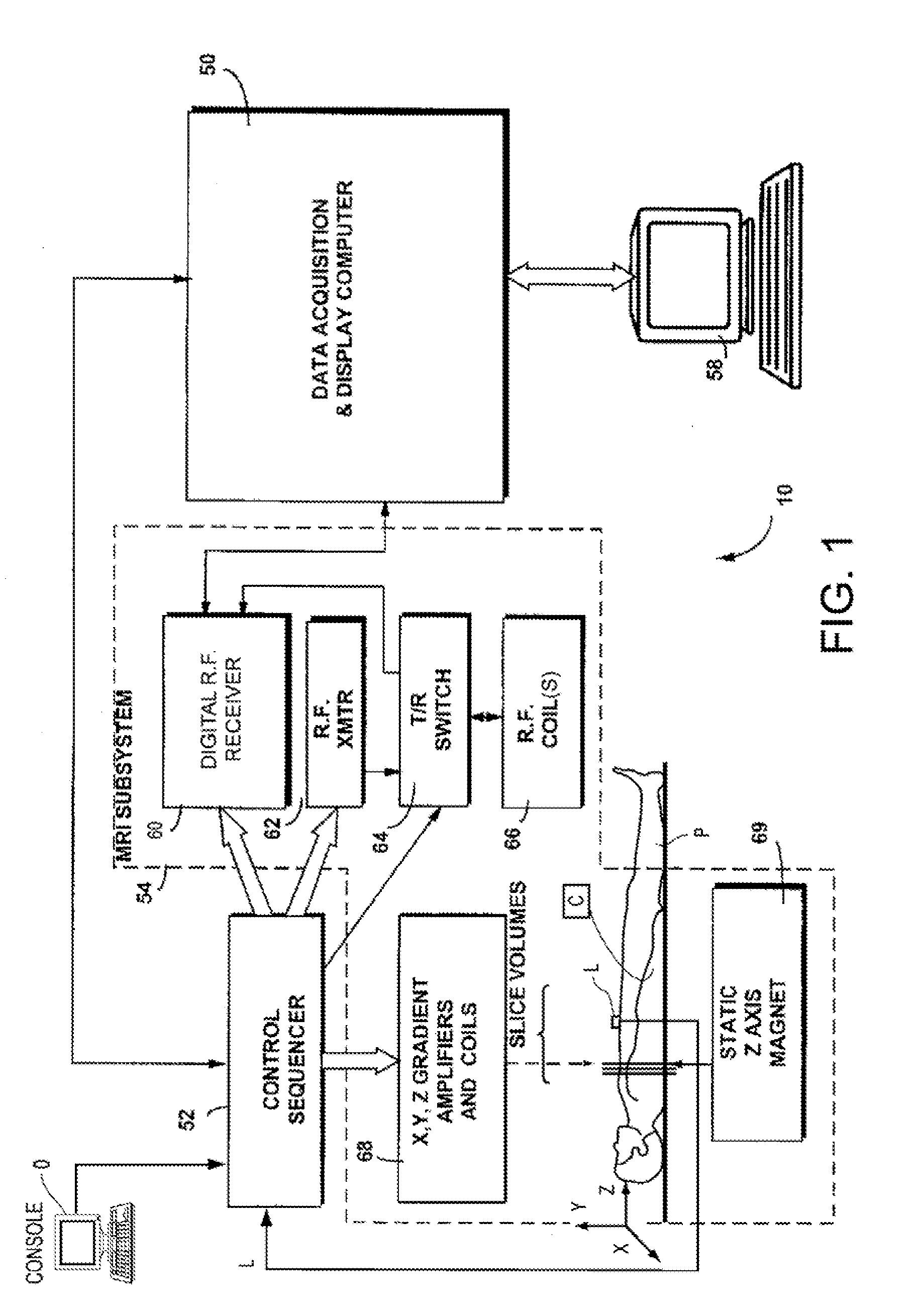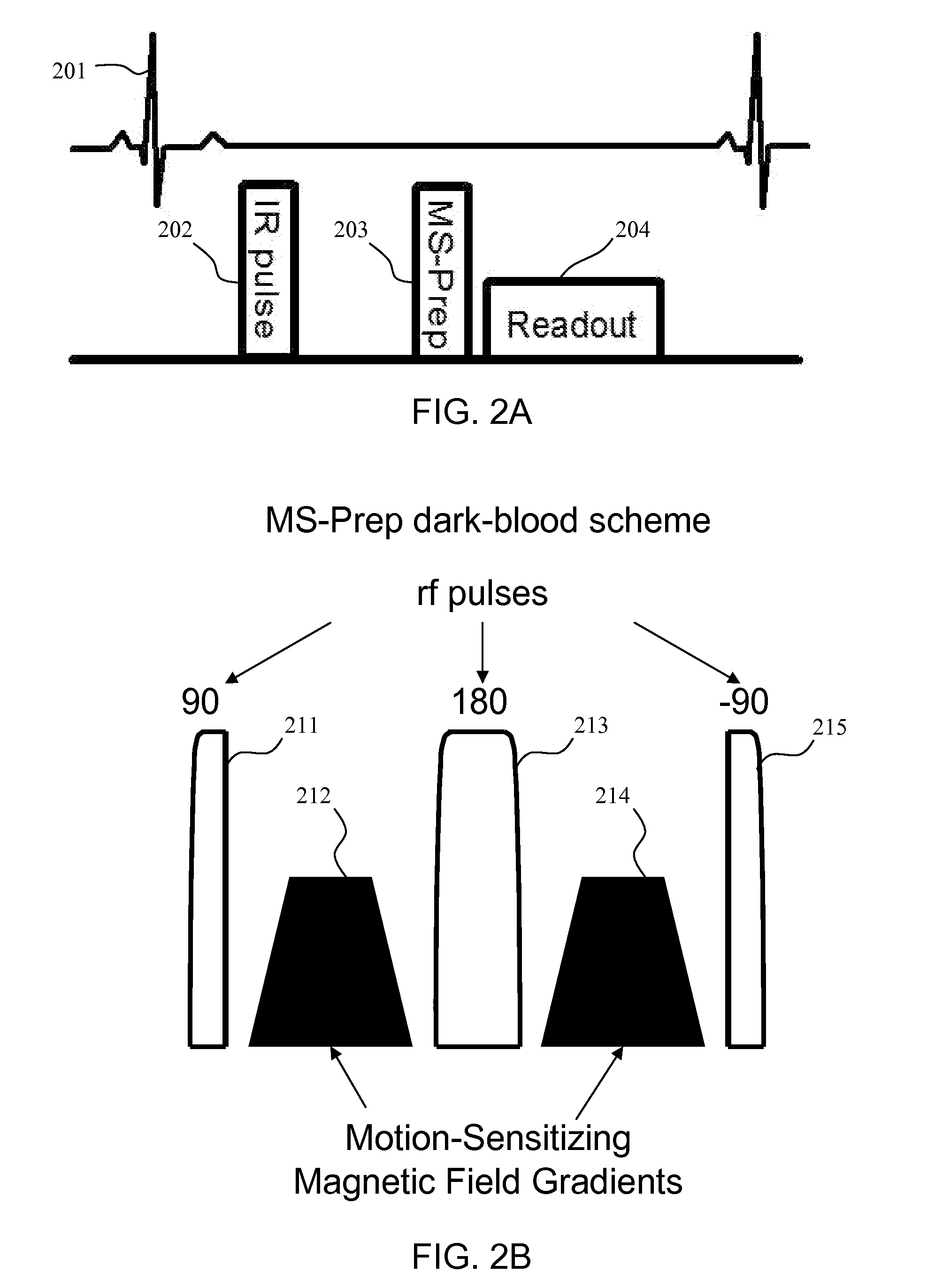Motion-attenuated contrast-enhanced cardiac magnetic resonance imaging and related method thereof
a magnetic resonance imaging and contrast-enhanced technology, applied in the field of improvement, to achieve the effect of improving visualization of subendocardial infarcts, retarding enhancement contrast to the myocardium, and improving contrast-enhanced cardiac magnetic resonan
- Summary
- Abstract
- Description
- Claims
- Application Information
AI Technical Summary
Benefits of technology
Problems solved by technology
Method used
Image
Examples
Embodiment Construction
MRI System
[0032]An embodiment of the present invention may be implemented on any commercial MRI system without necessarily requiring any additional hardware. FIG. 1 illustrates an example such MRI system 10 including a data acquisition and display computer 50 coupled to an operator console 0, a MRI real-time control sequencer 52, and a MRI subsystem 54. The MRI subsystem 54 may include XYZ magnetic gradient coils and associated amplifiers 68, a static Z-axis magnet 69, a digital RF transmitter 62, a digital RF receiver 60, a transmit / receive switch 64, and RF coil(s) 66. A dedicated phased-array coil and Electrocardiogram (ECG) leads L may be used for cardiac applications for synchronization of the control sequencer 52 with the electrical signals of the heart of patient P. The MRI Subsystem 54 may be controlled in real time by control sequencer 52 to generate magnetic and radio frequency fields that stimulate nuclear magnetic resonance (“NMR”) phenomena in a patient P (e.g., a human...
PUM
 Login to View More
Login to View More Abstract
Description
Claims
Application Information
 Login to View More
Login to View More - R&D
- Intellectual Property
- Life Sciences
- Materials
- Tech Scout
- Unparalleled Data Quality
- Higher Quality Content
- 60% Fewer Hallucinations
Browse by: Latest US Patents, China's latest patents, Technical Efficacy Thesaurus, Application Domain, Technology Topic, Popular Technical Reports.
© 2025 PatSnap. All rights reserved.Legal|Privacy policy|Modern Slavery Act Transparency Statement|Sitemap|About US| Contact US: help@patsnap.com



